Has Skoda lost its direction — or just the plot? Its bosses say they are going to charge buyers an additional fee to activate features already built into the car, such as satnav.
Only when a new owner pays extra to download the relevant software will they be able to use the navigation system. And that’s just the start.
The brand is also exploring more paid-for ‘on- demand’ features, including adaptive cruise control and automatic headlight dipping from the infotainment screen.
This was revealed in Berlin as the Volkswagen-owned marque unveiled its second-generation Kodiaq SUV with up to seven seats over three rows, which is set to hit UK showrooms early next year. For the first time the range will include a plug-in hybrid (PHEV) version with an electric-only range of more than 62 miles.
Martin Jahn, Skoda head of sales and marketing, told Autocar magazine: ‘We’re trying to explore functions on demand and give customers the chance to order the features online.’
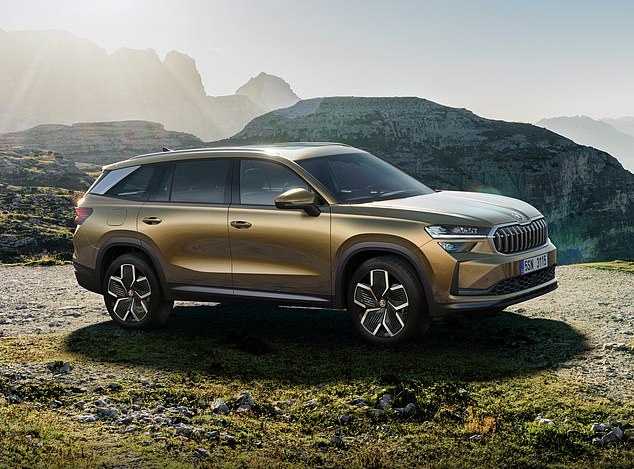
Rocky road ahead: The new Kodiaq’s pricing policy might attract a backlash
But it’s a controversial area. An angry backlash forced BMW to scrap plans to charge a monthly fee for access to heated seats already fitted to their cars.
Though no official prices have been announced yet for the latest Kodiaq, expect them to be an increase on the current first-generation line-up, which costs from £35,000.
The newcomer is bigger and roomier than its first-generation sibling, launched in 2016.
The Kodiaq iV PHEV features a 26.7 kWh battery and 150 hp 1.5 TSI petrol engine to deliver a total 204 hp to the front wheels via a 6-speed automatic direct-shift gearbox.
There are two petrol and two diesel engines, linked to a 7-speed automatic gearbox.
The entry-level 1.5 TSI 150 hp (110 kW) petrol is the first mild-hybrid and is joined by the more powerful 204 hp (150 kW) 2.0 TSI petrol. The two 2.0 TDI diesel variants deliver outputs of 15 hp (110 kW) and 193 hp (142 kW). The most powerful diesel and petrol engine versions are all-wheel drive.
The first Kodiaq plug-in hybrid version can be charged via an 11 kW wall-boxes and AC charging points, as well as 50 kW at DC fast-charging points. Energy is also recuperated during braking. Even with the batteries there is 745 litres of luggage capacity (910 litres in non-PHEV versions).
The Kodiaq has a range of large alloy wheels from 17 to 20 inches and nine exterior colours.
Other key features include a redesigned cockpit area, three physical ‘smart dials’ to adjust climate control and infotainment, a 10-inch instrument cluster and 13-inch infotainment screen, and optional head up display and massage seats.
Eco-credentials include no chrome and textiles from either 100 per cent recycled polyester or 40per cent natural wool.
There are four trim levels: Loft, lounge, Ecosuite and Sportline.
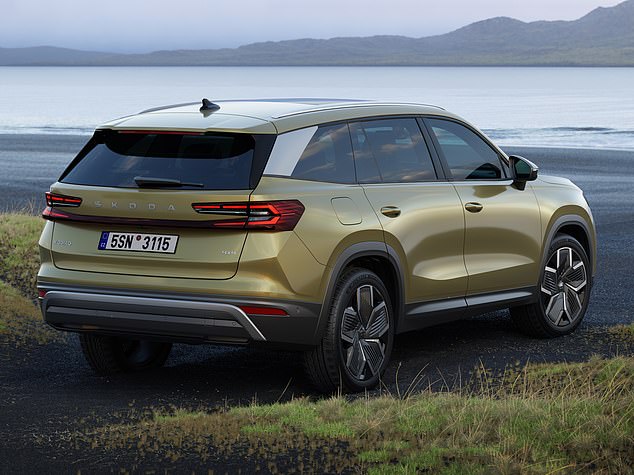
There are two petrol and two diesel engines, linked to a 7-speed automatic gearbox
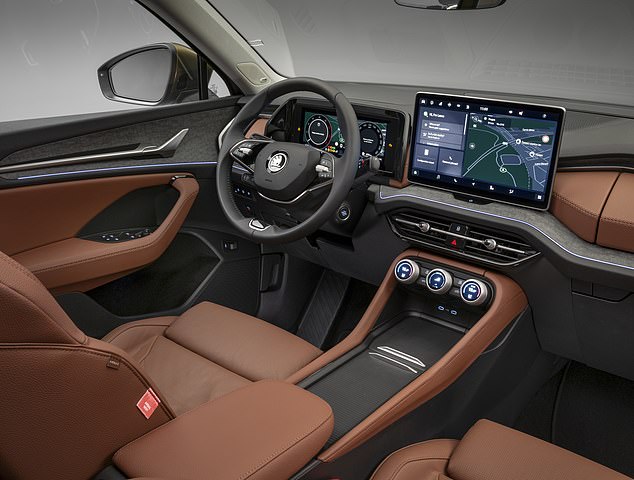
Other key features include a redesigned cockpit area with three physical ‘smart dials’ to adjust climate control and infotainment
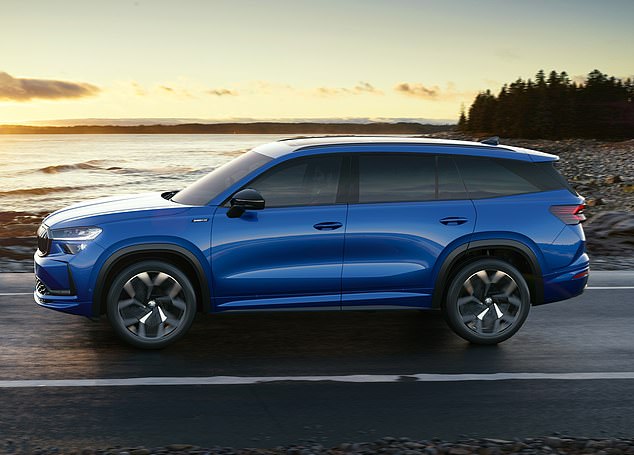
The new version is 61 millimetres longer at 4,758 millimetres, with a wheelbase of 2,791 millimetres
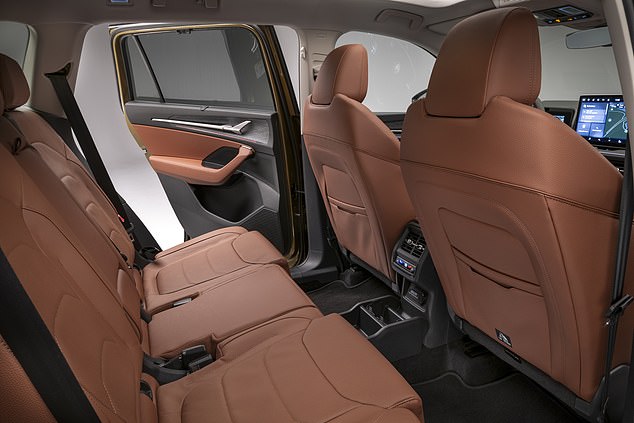
Skoda says its second-generation Kodiaq – named after the Kodiak bear from Southern Alaska – has ‘grown moderately’ compared to its predecessor
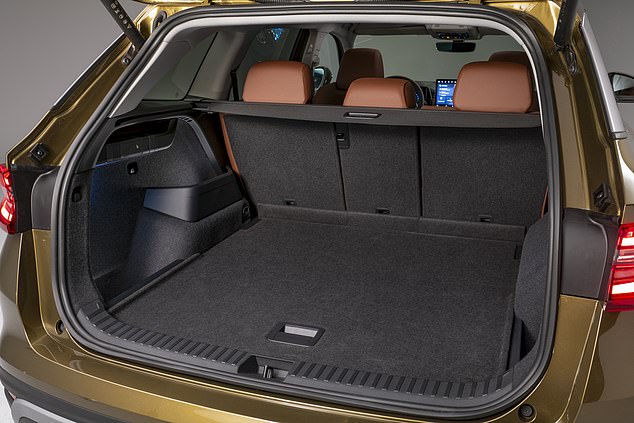
Luggage capacity has also increased, growing in the five-seater version by 75 litres to 910 litres without folding the rear seats down
A hot and sporty vRS version – with an expected 270hp 2.0 litre turbocharged petrol engine – is also in the pipeline.
Skoda says its second-generation Kodiaq – named after the Kodiak bear from Southern Alaska – has ‘grown moderately’ compared to its predecessor ‘but to great effect.’
The new version is 61 millimetres longer at 4,758 millimetres, with a wheelbase of 2,791 millimetres.
Added to the width of 1,864 millimetres and an almost unchanged height of 1,659 millimetres help create more interior space.
In the seven-seater version, passengers in the third row of seats now have 920 millimetres of headroom, 15 millimetres more than in the predecessor.
Luggage capacity has also increased, growing in the five-seater version by 75 litres to 910 litres without folding the rear seats down. With the rear seats folded, maximum capacity has increased by 40 litres to 2,105 litres.
The seven-seater now holds 340 litres behind the third row of seats – some 70 more than before – and 845 litres with the third-row seats folded down (an increase of 80 litres).
The seven-seater’s maximum cargo capacity is now 2,035 litres, 30 litres more than in the first generation.
Klaus Zellmer, CEO of Škoda Auto, said: ‘Our all-new flagship SUV has everything it needs to be a worthy successor in the Škoda Kodiaq line.
‘It takes the Škoda features our customers appreciate to the next level: more space, more features, and more efficiency. It makes everyday exploring even more rewarding.’
He added: ‘We have also broadened our range of highly efficient powertrains, introducing a plug-in hybrid with an electric range of over 62 miles, furthering our commitment to sustainable mobility.
‘Since its 2016 launch, the Kodiaq has played a crucial role in Škoda’s growth, consistently striking a chord with our customers. The new Kodiaq is perfectly placed to continue this successful legacy.’
Jeep launches fifth-generation Wrangler
Jeep has launched its fifth-generation Wrangler — just as it marked the five-millionth Wrangler sale globally.
Prices will start at £60,785 with vehicles arriving early next year, along with a fetching new blue-grey colour called ‘Anvil’.
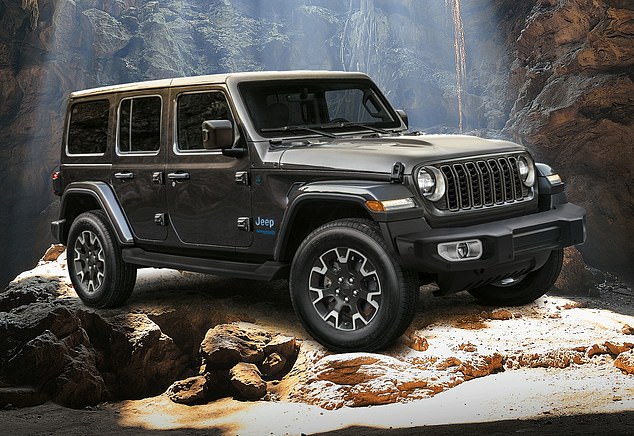
Prices will start at £60,785 with vehicles arriving early next year, along with a fetching new blue-grey colour called ‘Anvil’
With new styling tweaks, including to the seven-slot grille and additional safety features such as drowsy driver detection and lane departure warning, there will be just two simplified trim levels — Sahara and Rubicon.
- The UK has surpassed 50,000 electric vehicle (EV) public charging points, according to new data from charging-point mapping service Zapmap. The 50,000th charger was an ultra-rapid device from MFG EV Power installed at a service station in Weston-super-Mare, Somerset. Zapmap predicts that, at the current rate of installation, the UK is likely to reach 100,000 charging devices next August.
Car servicing and repair complaints peak
Consumer complaints about car servicing and repair have peaked this year, says the Motor Ombudsman citing ‘pressures associated with the cost of living crisis’.
In the three months to September 30 it received 1,348 new complaints, up 9 per cent on the same period last year, 10 per cent on this year’s second quarter and 13 per cent on the first three months of this year.
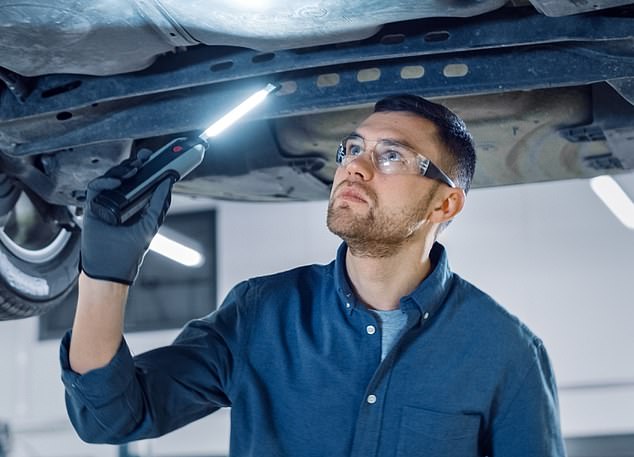
Consumer complaints about car servicing and repair have peaked this year
That makes more than 3,763 complaints to date, and it predicts it will log more than 5,000 disputes by the end of the year.
Diesel cars drove over half (52 per cent) of the new complaints, followed by petrol (40 per cent), electric vehicles and hybrids (both 4 per cent).
Drivetrain and engine issues made up 51 per cent, followed by transmission, fuel and exhaust problems.
Some links in this article may be affiliate links. If you click on them we may earn a small commission. That helps us fund This Is Money, and keep it free to use. We do not write articles to promote products. We do not allow any commercial relationship to affect our editorial independence.









